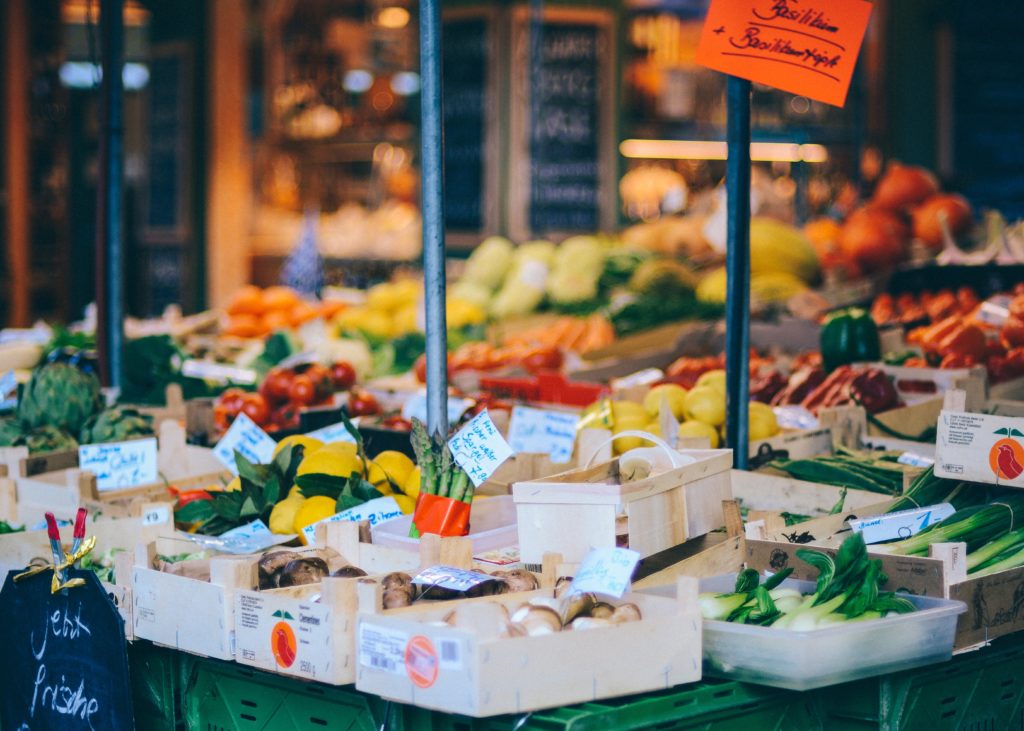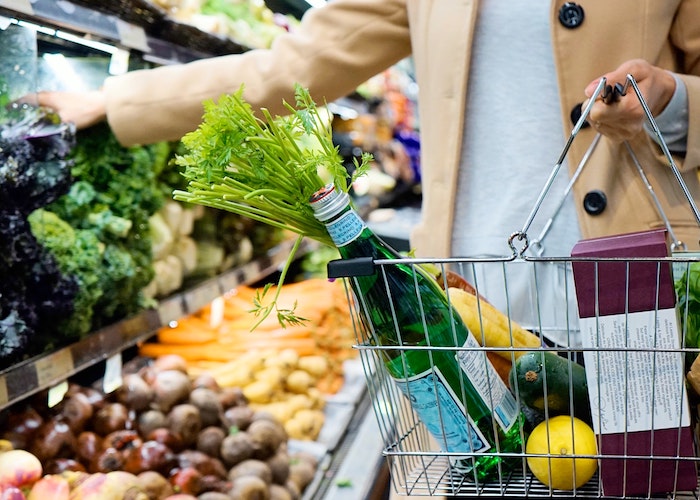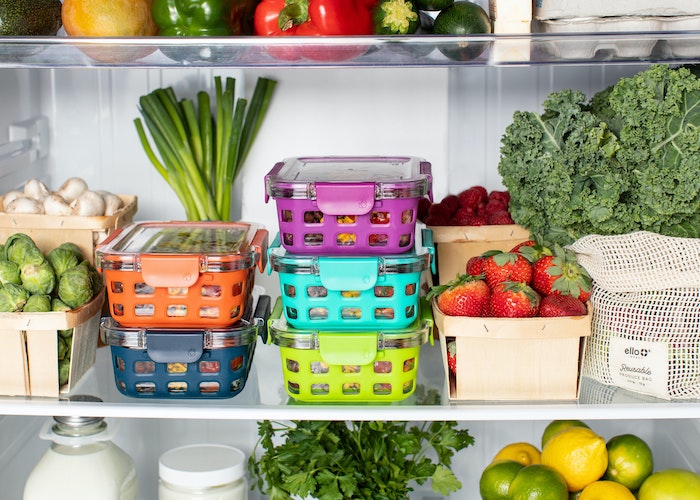6 Ways I Save Up To $100 Per Month On Groceries With Absolutely No Couponing

I am a full-time college student with two part-time jobs, and none of those include couponing. Clipping and organizing then remembering to bring along to the grocery store is a routine I don’t have the time or desire for at this point in my life, but I *do* have a desire to consistently save my money. These tips are written from the perspective of a non-parent who cooks for one, BUT they have saved me an average of $10-$30 per grocery trip. These savings have the potential to stack up massively when considered over the course of one year, and they take little additional effort on our part as consumers. Adjustments and alternate suggestions will be included for each!
1. Shop With Reusable Grocery Bags
Parkinson’s Law explains that work will expand to fill the amount of time give for its completion, and this concept can also be applied to how we occupy physical space. When we have x amount of space, we will often fill it. Think about it: how many people will fill up their cart because it’s what they’re used to, not because it’s what they need?
Make it easier for yourself to stick to your grocery list and curb impulse purchases by shopping with a set number of reusable grocery bags. Take only the amount with you that you foresee needing for a given shopping trip, and do not exceed that space. Of course, be realistic about your needs — and in an emergency, one extra plastic shopping bag is always an option.
2. Walk To The Grocery Store Instead Of Driving
This strategy tailgates on the first. When walking to and from the grocery store, your spending is inherently bound by what you can comfortably carry. The endorphins, fresh air, and scenery will give you another reason to enjoy meal prep that much more. Pick a favorite podcast or album to listen to, and you will appreciate having this time to fully take it in sans-distractions, while also boosting your step intake.
I personally take two reusable shopping bags, and it is enough space for my entire week’s meal prep ingredients (prepping breakfast, lunch, and dinner). This strategy can scale up if you and a partner grocery shop together or if you do bi-weekly preps and shopping for two.
In instances when I’ve felt overwhelmed by the weight of my grocery haul or it has unexpectedly started raining, I’ve taken public transportation or an Uber/Lyft home. This costs about $7 where I live. This does happen on rare occasions, but I’ve seen that my general savings still greatly outweigh these pop-up costs.
For those of you living in smaller cities who drive ten miles to the grocery store: I see you. Consider carpooling with a neighborhood friend instead — you will not want to fill the entire backseat with your own groceries, and this will reduce the amount of time you feel you have to aimlessly roam aisles. Alternatively, you can use a digital grocery order service if your grocery store has it. This will allow you to be mindful of your total and also review your cart one last time prior to check out, removing anything unnecessary with a simple click.
3. Establish A Routine “Splurge”
When I first began meal-prepping, I was grocery shopping more than ever before. The opportunity to keep fresh produce in house is amazing! The unhealthy side of this is that my average monthly splurges became much higher. Instead of adding a few extra things to the cart once a month, I noticed myself doing this on each weekly trip.
It is essential to shop with a list, but I trust you already know that. Designating one non-list treat per shopping trip provides a nice way to reward yourself and keep things interesting, without leading to food waste. Good options for a splurge in the $3-$5 range include your favorite bottled coffee beverage or kombucha, an inexpensive bunch of flowers, a magazine, or even a single-serving dessert from the bakery section.
4. Track Toiletries Separately
Tracking the cost of personal toiletries separately from your grocery budget is essential. Simply because these items may be purchased at the same place does not mean their costs are related to each other. Think about it: you wouldn’t budget your haircut with your groceries, so why include your skincare and shampoo? Being mindful of how you categorize these costs allows clarity in your finances.
Perks: you can better appreciate how economical your meal preps are. Likewise, it also increases the mindfulness of your personal product spending. One isn’t able to camouflage the other.
5. Grocery Shop Once A Week
Grocery shopping once a week is a comfortable, worry-free window to maintain fresh produce.
It helps you to wait one more week for non-essentials you may be tempted to toss in your cart when you pass by them. Adopt the mindset of, “I can get this next week if I find I need it then.” You will be less likely to needlessly purchase and restock items, reducing this food waste. Your next grocery trip is never so far off that you can’t wait for certain items.
Building on our previous tips, one week trip sets you up for fewer impulse purchases and maintains a sustainable amount of “treats.”
6. Don’t Shop Around
This may initially seem counterintuitive to what you know about saving money. However, shopping around 2-4 different marketplaces is often done for a better price on a pack of chicken thighs or BOGO cereal deals. Generally, the time and transportation costs of this do not greatly outweigh the savings when you are shopping on a weekly/regular basis.
Instead, choose which grocery store you shop at on a given week based on the types of things you notice yourself needing most. Is your list this week produce heavy, or more focused on dry goods? Select your destination accordingly, and recognize that the fifty cents markup on your box of cereal will probably even out with the prices you find on your fresh veggies and fruits, or vice versa.
*****
I can only imagine the extent of these savings when paired with coupon clipping or other money-saving measures. Hopefully, some of these tips can be incorporated into your lifestyle in a way that saves you money for other things that matter most to you! What strategies allow you to save money while grocery shopping? Share with us below!
Adeline Thomason is based in Atlanta and is currently studying architecture at Georgia Tech. She is endlessly interested in the environment we build for ourselves through words, lifestyle, and space. At any given time, she can be found doing something related to writing, reading, painting, or parks.
Image via Unsplash
Like this story? Follow The Financial Diet on Facebook, Instagram, and Twitter for daily tips and inspiration, and sign up for our email newsletter here.




